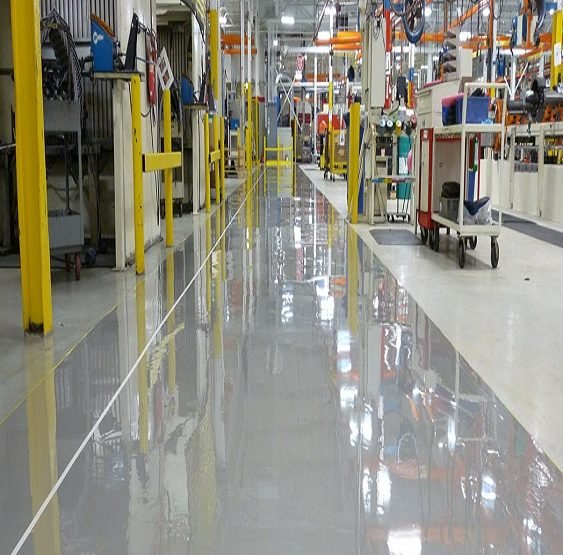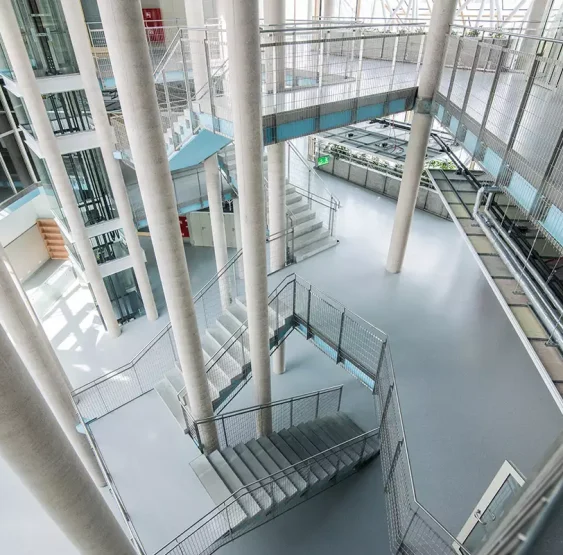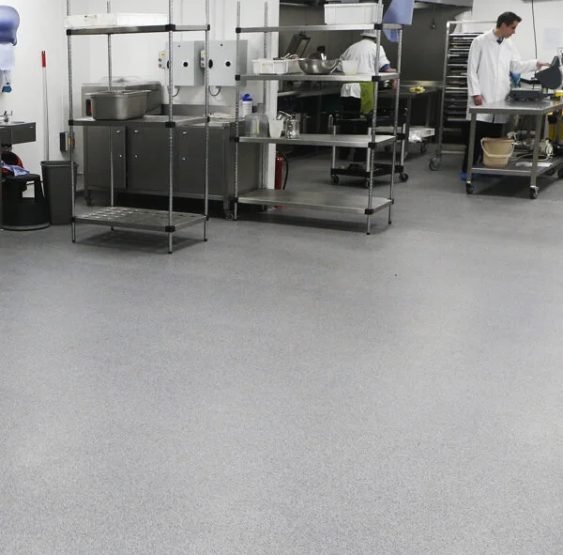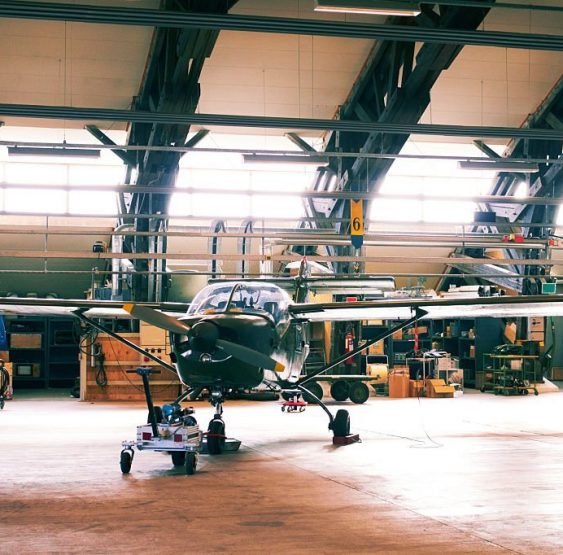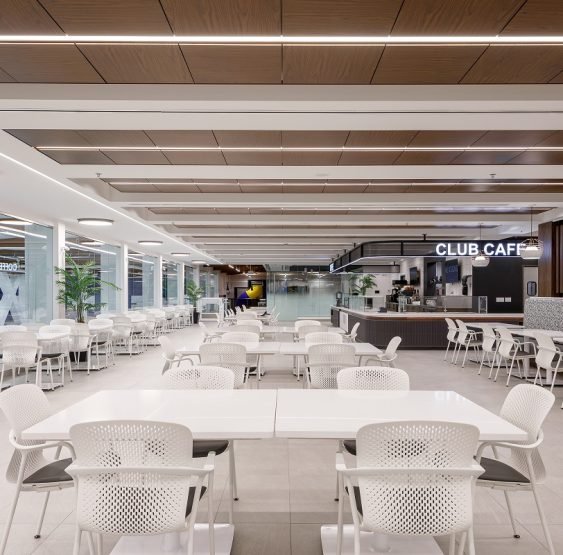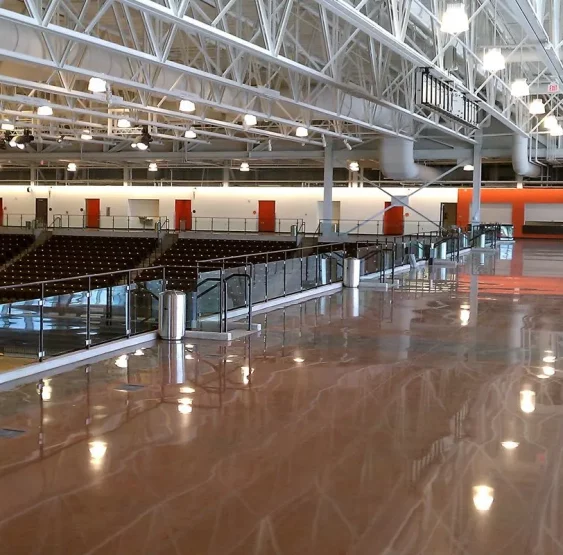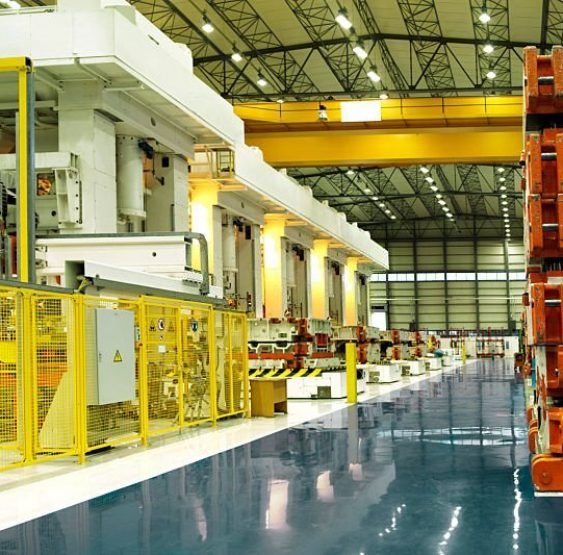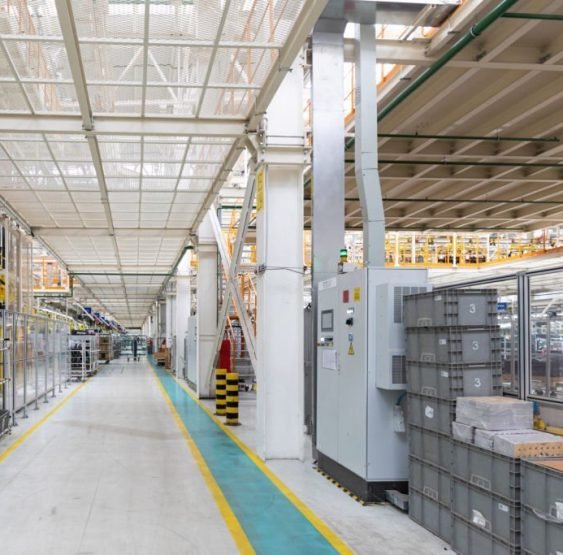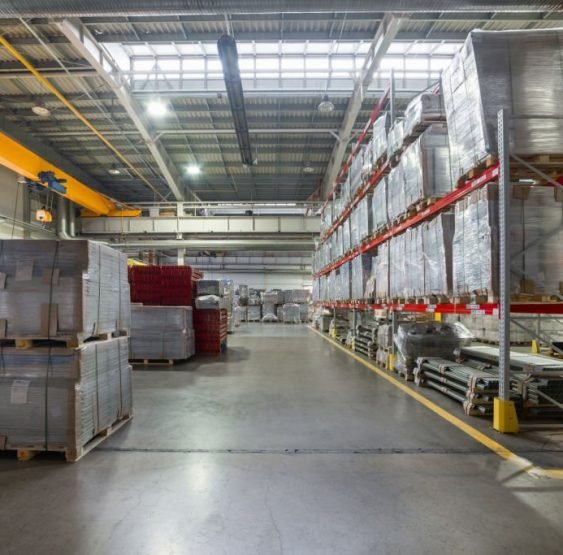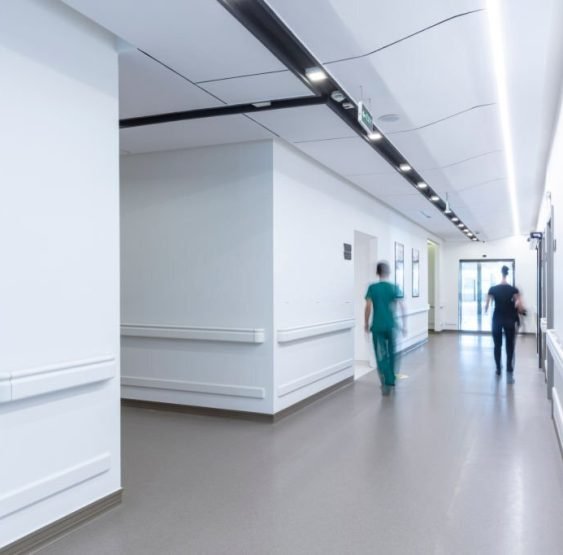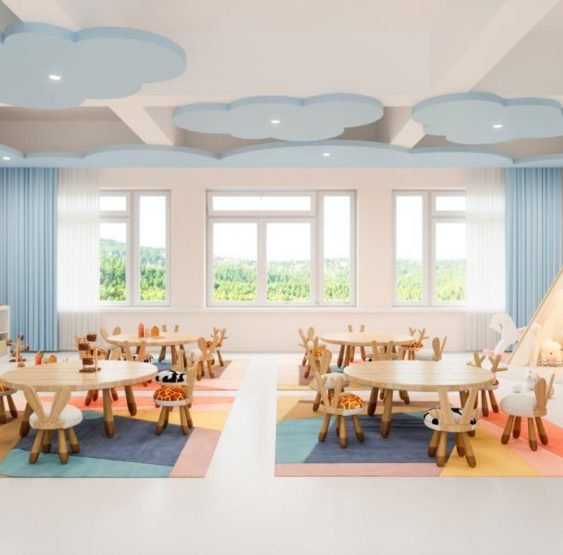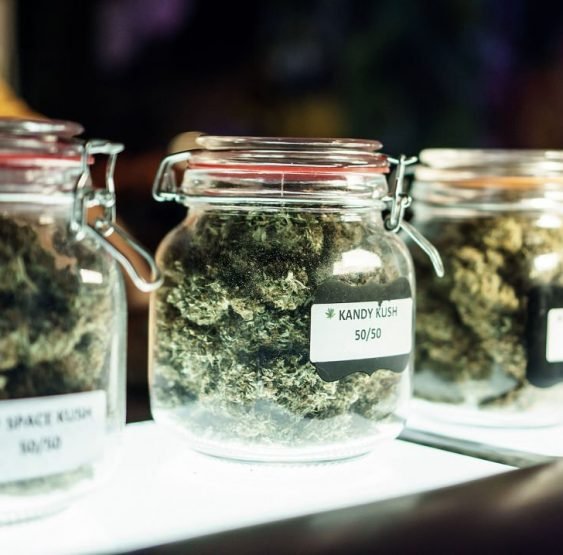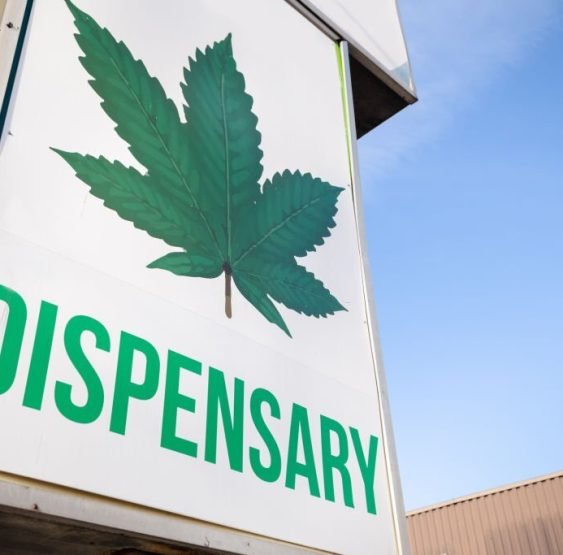Washdown Area & Chemical-Resistant Flooring
Seamless • CFIA-Compliant • Engineered for Aggressive Cleaning
In washdown zones of food, beverage, lab, or processing facilities, floors endure high-pressure sprays, hot water, sanitizers, and chemical exposure. Priority One Epoxy Flooring delivers fully sealed, nonporous epoxy & polyurethane systems built for extreme washdown performance across Vancouver and BC. Our floors are CFIA-compliant, slip-resistant, and designed for easy sanitation with no cracks or joints that trap moisture or contaminants.
Washdown Area & Chemical-Resistant Flooring — Vancouver & British Columbia
Seamless • CFIA-Compliant • Urethane Mortar & High-Performance Resinous Systems
Washdown areas demand flooring that survives rigorous daily sanitation: hot water, high-pressure sprays, detergents, sanitizers, and aggressive chemicals. Priority One Epoxy Flooring installs engineered, seamless washdown area epoxy flooring across Vancouver, the Fraser Valley, Vancouver Island, the Okanagan and throughout British Columbia. Our CFIA-aligned, chemical-resistant systems — with a focus on urethane mortar (polyurethane cement) and high-build epoxy options — are specified to resist thermal shock, chemical attack and long-term wear while simplifying cleaning and protecting product integrity.
Why Washdown Areas Need Purpose-Built Flooring
Ordinary concrete or tile fails quickly under repeated washdowns. Hot water and alkali detergents accelerate deterioration, joints and grout collect organic matter, and thermal cycling from hot cleaning processes causes spalling. This increases sanitation time and the risk of contamination for food, beverage and pharmaceutical facilities. A purpose-built, seamless resinous floor system eliminates joints, provides chemical resistance, and protects the substrate, reducing downtime and maintenance costs while improving hygiene and inspection outcomes.
At Priority One, we design systems that consider the full washdown environment: chemical exposures, peak temperatures, mechanical traffic (forklifts, handcarts), required slip resistance, and drainage. The result is a specification that meets sanitation programs and facilities’ operational needs across BC.
Key Features — What To Expect From A Proper Washdown Floor
- Seamless, non-porous surface that eliminates harborage points and simplifies sanitation.
- Chemical resistance to acids, alkalis, sanitizers and common production chemicals used in washdown areas.
- Thermal shock tolerance — urethane mortar systems resist spalling from hot water washdowns and rapid temperature changes.
- Slip resistance options tuned to pedestrian and wheeled traffic requirements (ADA and local safety standards).
- Coved base integration and drain detailing to ensure positive drainage and hygienic transitions to walls and equipment.
- Fast cure/fast return-to-service options (polyaspartic or certain polyurethanes) when downtime must be minimized.
- Documented QA and warranties — adhesion testing, coverage records, and written warranties to support audits and inspections.
Recommended Flooring Systems — Urethane Mortar First, Then Options
Urethane Mortar (Polyurethane Cement) — Our First Choice for Washdown Areas
Urethane mortar systems combine a cementitious aggregate with a two-component urethane binder to create a tough, fast-setting, and thermally-stable floor. These systems bond to prepared concrete and deliver exceptional resistance to thermal shock, hot water, aggressive chemicals and heavy rolling loads — making them ideal for primary washdown production areas. Benefits include rapid strength gain, low dusting, excellent impact resistance and durable coves for hygienic wall transitions.
High-Build Epoxy & Quartz Broadcast Systems
High-build epoxy systems and quartz broadcast builds are suitable for peripheral washdown zones, packaging rooms, and areas where abrasion and chemical resistance are required but thermal shock is less extreme. When topped with a UV-stable polyurethane, these systems offer long service life and easy cleanability.
Polyaspartic & Fast-Cure Polyurethane Topcoats
For facilities needing rapid turnaround, polyaspartic or fast-cure polyurethane topcoats can reduce downtime significantly. These products are particularly useful in service areas, loading docks, and small production cells where quick return to service matters.
Antimicrobial Additives & Food-Grade Topcoats
Where HACCP or CFIA protocols require additional controls, we can specify food-grade, antimicrobial topcoats and additives that reduce microbial adhesion and complement your sanitation program. These are not substitutes for cleaning, but they reduce risk by lowering potential harborage points on floor surfaces.
Waterproof Membranes & Trench Drain Integration
In wet zones over occupied spaces below, or where structural protection is required, we install multi-layer waterproof membranes with reinforcing fabrics. Combined with integrated trench drains and seamless coves, these details create a complete washdown solution that prevents moisture migration and eases cleaning procedures.
Tip: Ask about slope surveys and ponding maps — correcting low points now prevents icing and slip hazards later.
Where These Systems Matter Most
Food & Beverage Production Washdown Zones
Primary production rooms face daily exposure to hot water, sanitizers and process fluids. Urethane mortar systems protect these spaces and simplify HACCP-style cleaning routines.
Meat, Poultry & Seafood Processing
These facilities require aggressive washdowns and stringent sanitation. Seamless resinous floors with coved bases and positive drainage reduce bacteria risk and speed inspections.
Dairy, Cheese, & Beverage Plants
Acidic and sugar-rich wastes, hot water cleaning and repeated tractor/forklift movement demand robust floors — typically urethane mortar or high-build epoxy systems.
Commercial Kitchens & Institutional Wash Stations
Kitchen and scullery areas require slip-resistant, sanitary floors that can survive frequent, high-temperature cleaning cycles.
Laboratories & R&D Wash Areas
Where chemicals and solvents are used, a chemically resistant topcoat and properly detailed coves protect both personnel and infrastructure.
Cold Storage & Docks
For refrigerated docks or coolers that also see washdowns, combine micro-texture with closed-pore finishes for traction plus easy release during cleaning.
Our Installation Process — Designed for Predictable Performance
Installing a durable washdown area floor starts with diagnostics and finishes with documented testing. We manage every step: site evaluation, structural and moisture testing, substrate remediation, system build up, and QA handover.
- Site consultation & testing: Moisture (insitu) testing, pH, adhesion pull-tests, and mapping of delaminations and movement joints.
- Design & specification: We create a system specification tailored to chemical exposures, traffic types and sanitation frequency — often specifying urethane mortar where thermal shock is present.
- Substrate repairs: Repair spalls, sawcut and seal movement joints, inject cracks and remove contaminated toppings.
- Surface preparation: Shotblast or diamond grind to achieve profile and remove weak laitance for long-term adhesion.
- Primer & scratch coats: Stabilize substrate and promote bond prior to build-up.
- System build-up: Install urethane mortar, quartz broadcast, or epoxy layers; form coves, integrate trench drains and edge details.
- Topcoats & curing: Apply UV-stable polyurethanes or food-grade topcoats. Conduct adhesion testing and coverage verification.
- Handover: Deliver QA documentation, warranties and tailored cleaning & maintenance instructions for your team.
We coordinate phasing and off-shift work to minimize production disruption. For continuous-process plants, phased installations allow production to continue while we upgrade specific zones.
Performance & Lifecycle Value
Although initial installed costs for high-performance resinous systems can be higher than basic toppings, the lifecycle savings are considerable. Durable, seamless systems lower cleaning labour, avoid recurring grout repairs, reduce unexpected downtime, and extend slab life — delivering measurable ROI for production facilities.
How We Compare to Tile & Coated Concrete
- Tile: Vulnerable to grout failure, under-tile moisture, and bacterial harborage — higher long-term maintenance.
- Thin coatings: Susceptible to delamination and thermal shock — often a short-term fix.
- Urethane mortar: Engineered for washdown: thermal tolerance, chemical resistance and coves make it the best long-term choice.
Case Study — Fraser Valley Beverage Plant
A Fraser Valley beverage processing plant faced recurring tile and grout failures in pasteurization and washdown areas. The client needed a long-lasting, sanitary floor solution that could withstand daily high-temperature washdowns and strong alkaline cleaners.
Scope: Remove failing tile, repair slab and joints, install 12mm urethane mortar with integrated coves and trench drains, plus a UV-stable polyurethane finish in adjacent packaging zones.
Outcome: After installation the facility reported a 60% reduction in cleaning time, elimination of under-tile contamination, and no further grout failures. Inspectors validated the facility’s sanitation controls and the plant regained full confidence in its washdown protocol. The owner also noted reduced lifecycle maintenance costs versus prior tile repairs.
Service Areas — We Work Across British Columbia
Priority One Epoxy Flooring mobilizes teams for scheduled projects and emergency repairs across BC, including:
- Metro Vancouver — Vancouver, Burnaby, Richmond, North Vancouver, Surrey, Coquitlam
- Fraser Valley — Abbotsford, Langley, Chilliwack
- Vancouver Island — Victoria, Nanaimo, Parksville
- Okanagan & Wine Country — Kelowna, Penticton, Osoyoos
- Interior Regions — Kamloops, Vernon, Nelson
Frequently Asked Questions — Washdown Area Flooring
What is the best floor for washdown areas?
For most heavy washdown production zones, urethane mortar (polyurethane cement) is the preferred solution due to its thermal shock resistance, chemical tolerance and durable coves. High-build epoxy broadcast systems are also used in lower temperature or secondary zones.
Can you apply resinous floors over existing tile?
Sometimes — but only after a complete assessment. Failed adhesives, loose tile and contaminated substrates must be removed. Proper surface prep and targeted substrate repairs are essential to avoid delamination.
How long before we can wash or resume production?
Return-to-service depends on system selection and ambient conditions. Fast-cure polyaspartic topcoats may reopen in 24–48 hours, while full urethane mortar systems typically require longer cure windows. We provide clear timelines during specification.
Are these floors CFIA and HACCP compatible?
Yes. Seamless resinous floors with coved bases and appropriate topcoats are compatible with HACCP/CFIA sanitation programs when specified and detailed correctly. We provide documentation to support inspections.
Do you provide warranties and QA documentation?
Yes. We include written warranties and deliver QA packages with adhesion results, coverage rates, and maintenance guides tailored to the installed system.
Specify a Durable Washdown Floor for Your Facility
Protect product quality, speed up sanitation, and reduce long-term repair costs with a professionally specified washdown area flooring system from Priority One Epoxy Flooring. Contact us for a free on-site assessment, system recommendation, and phased installation plan that fits your production schedule.

